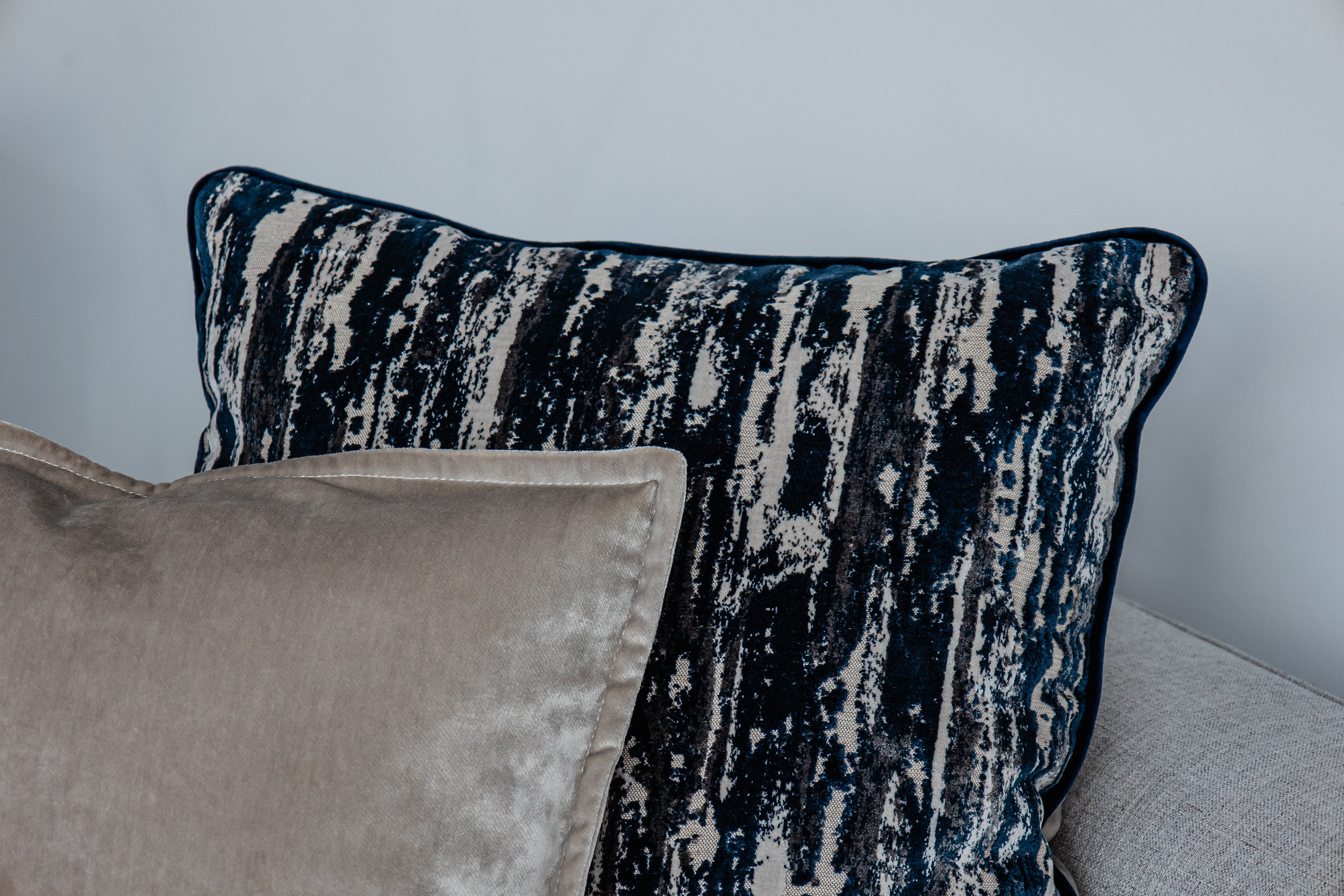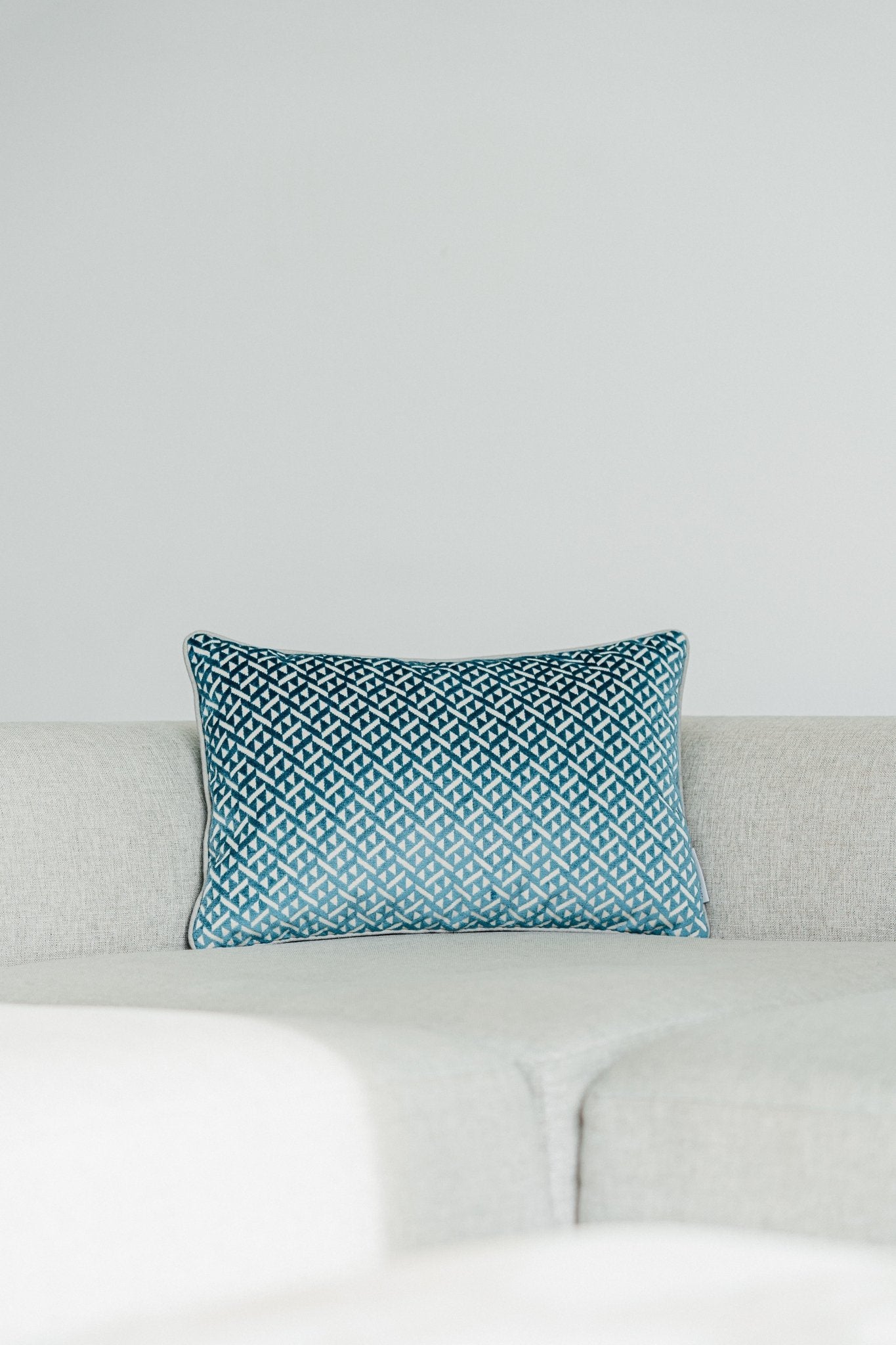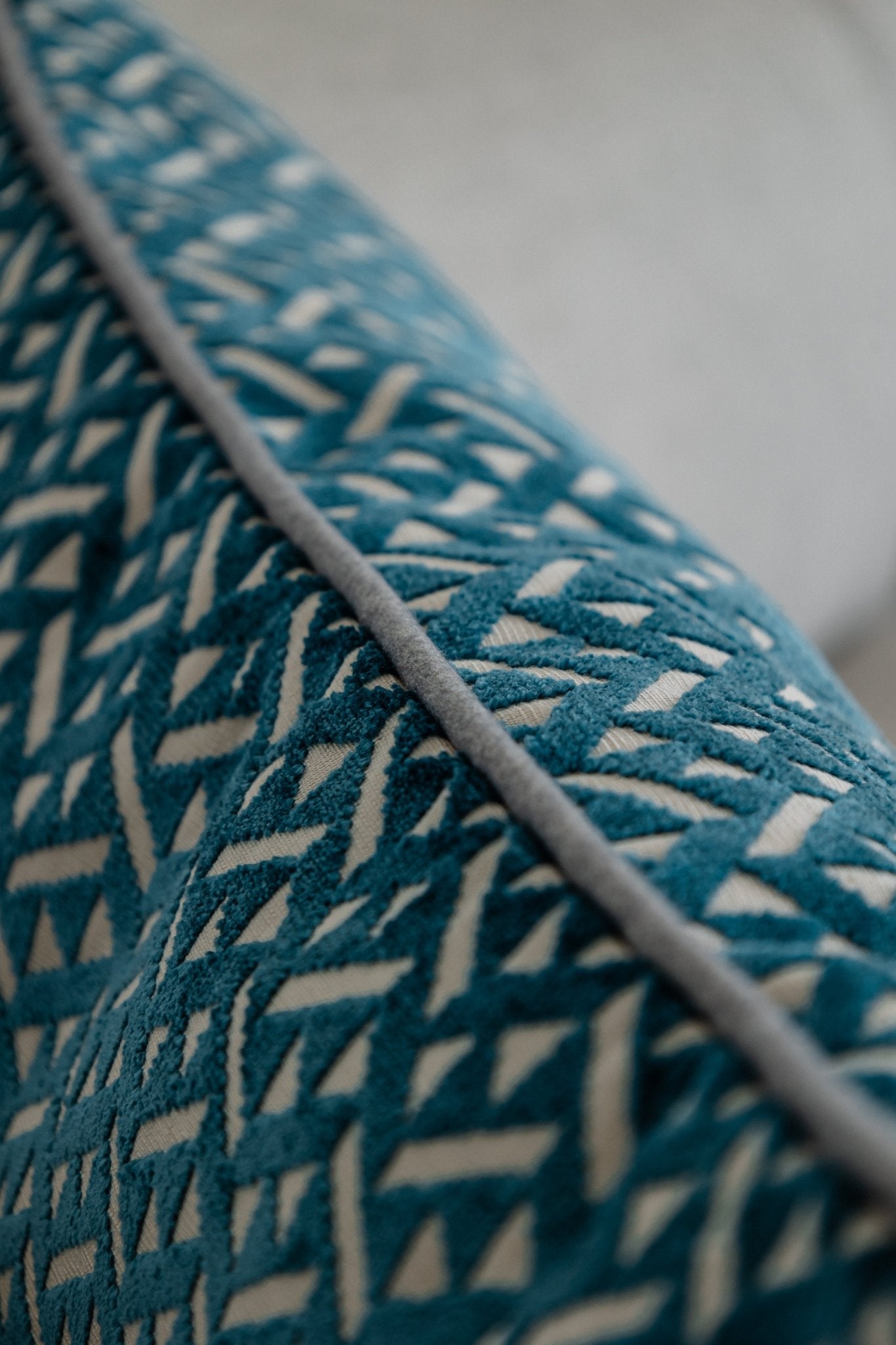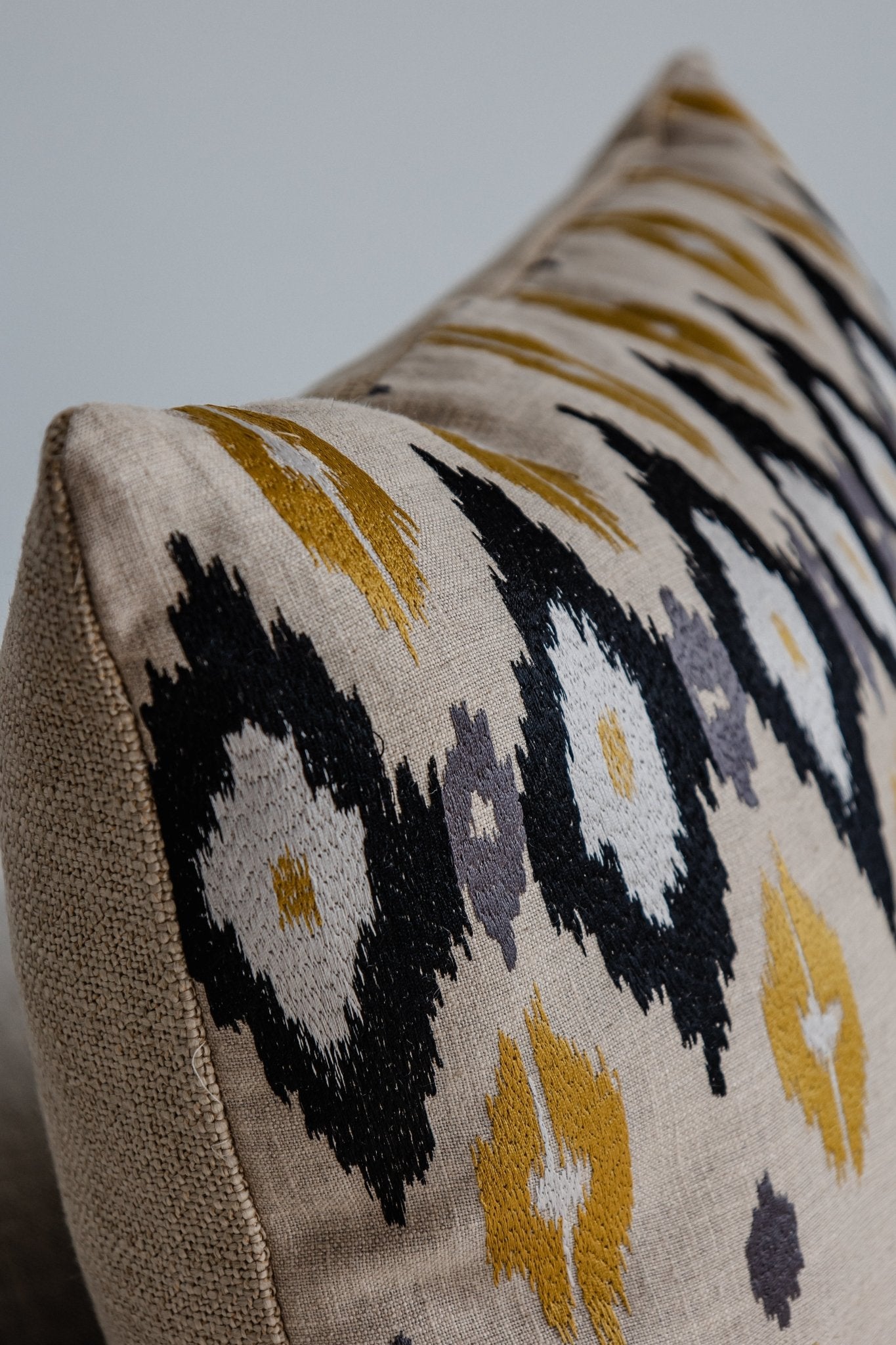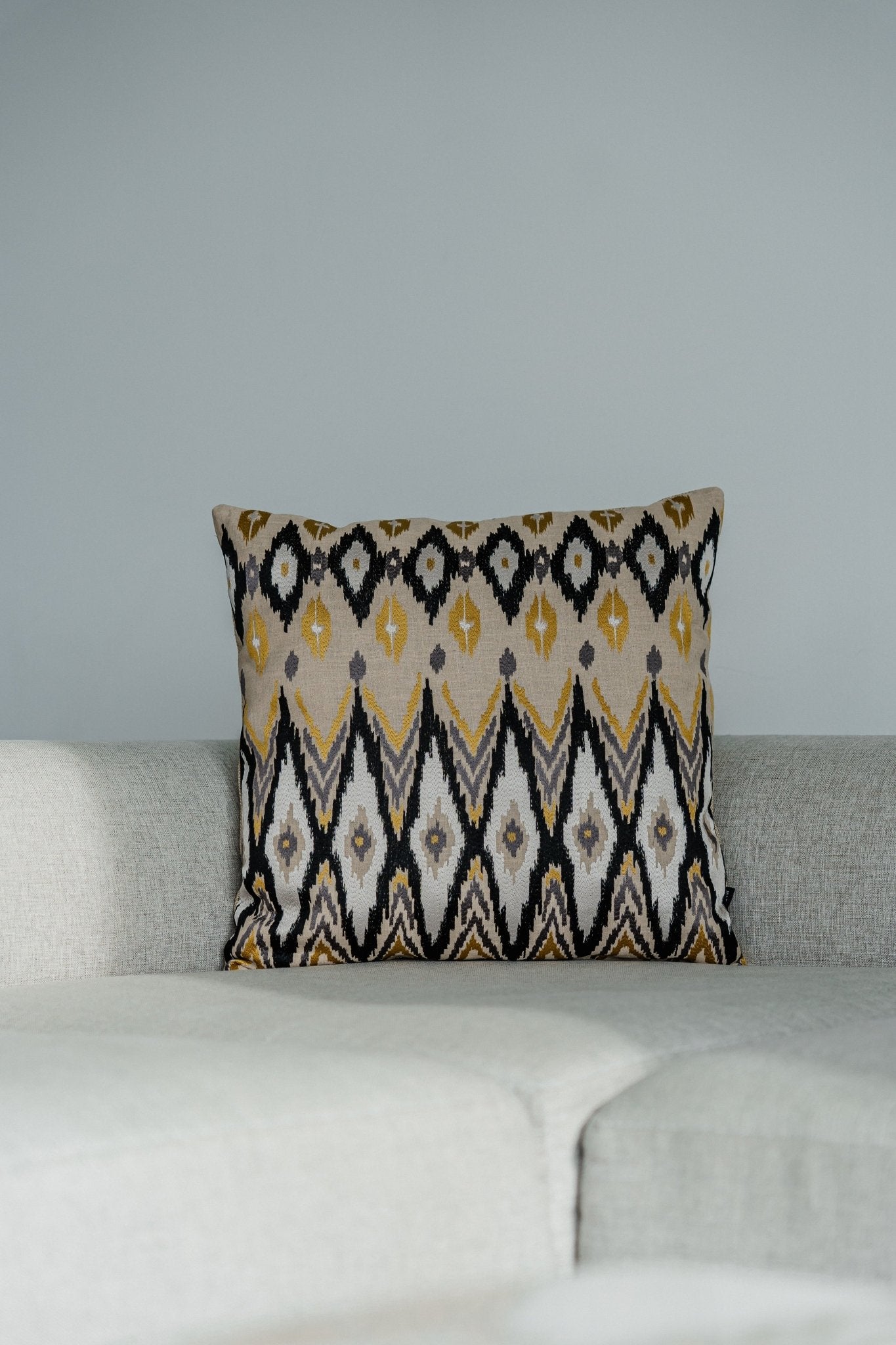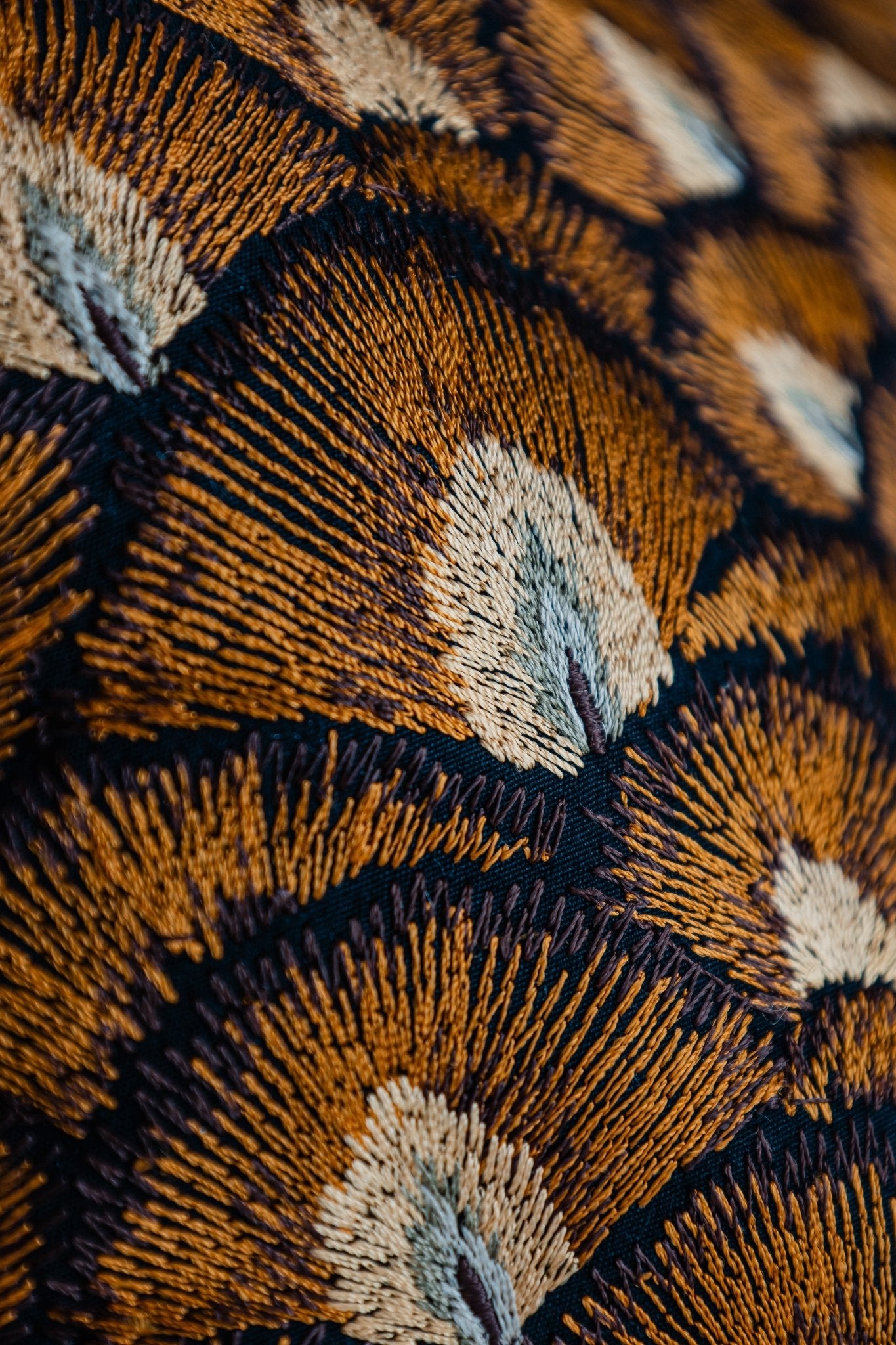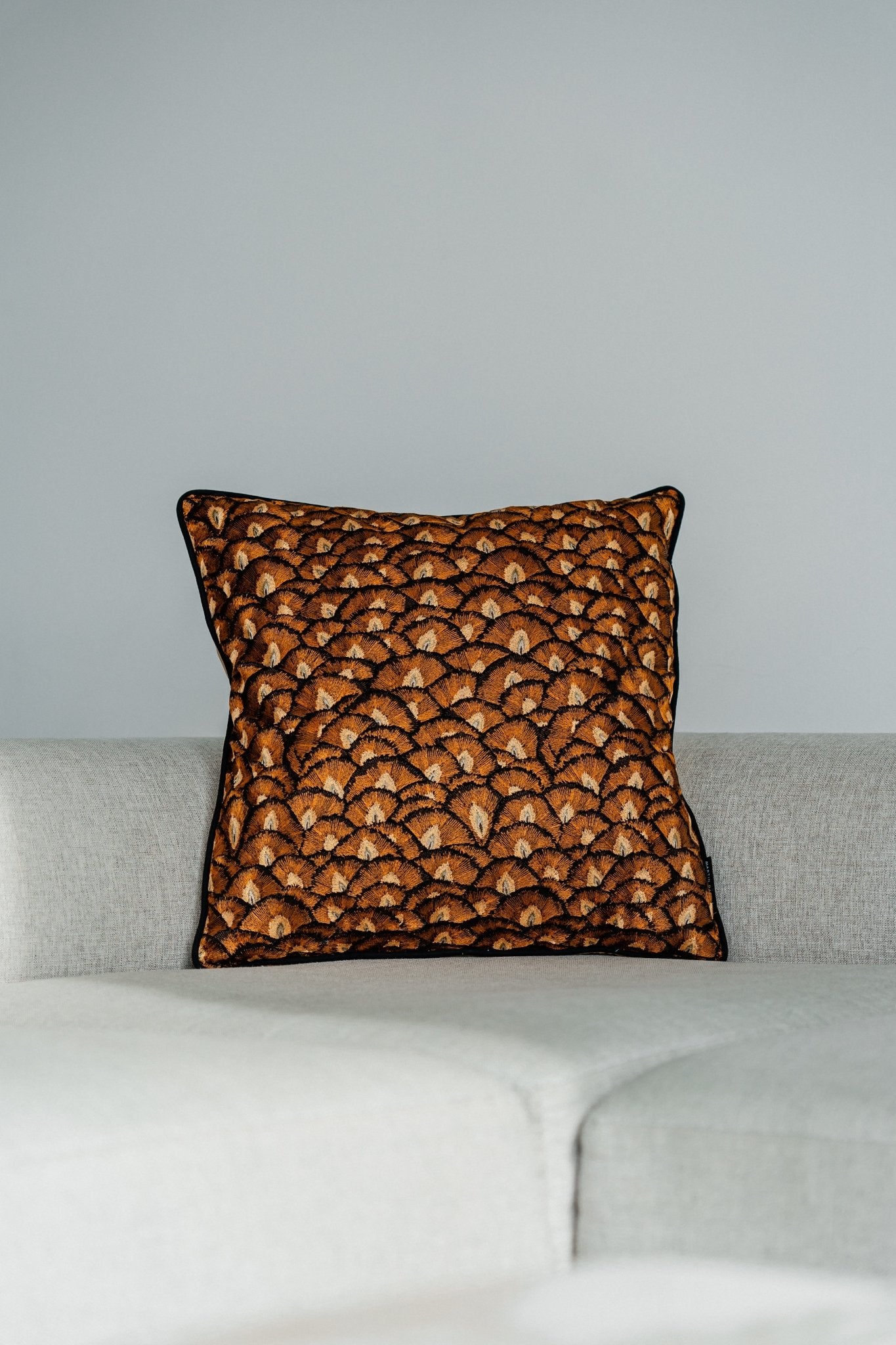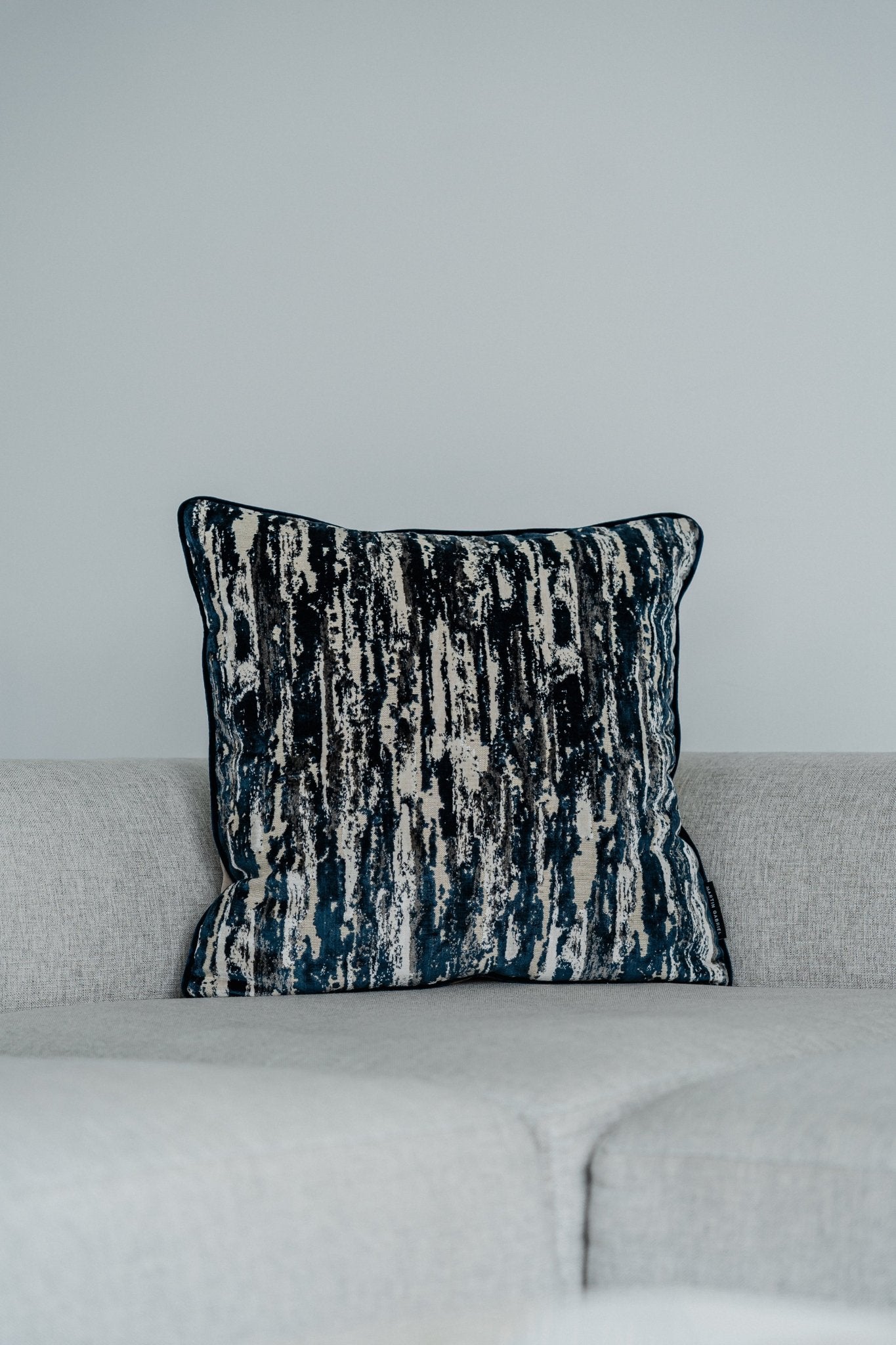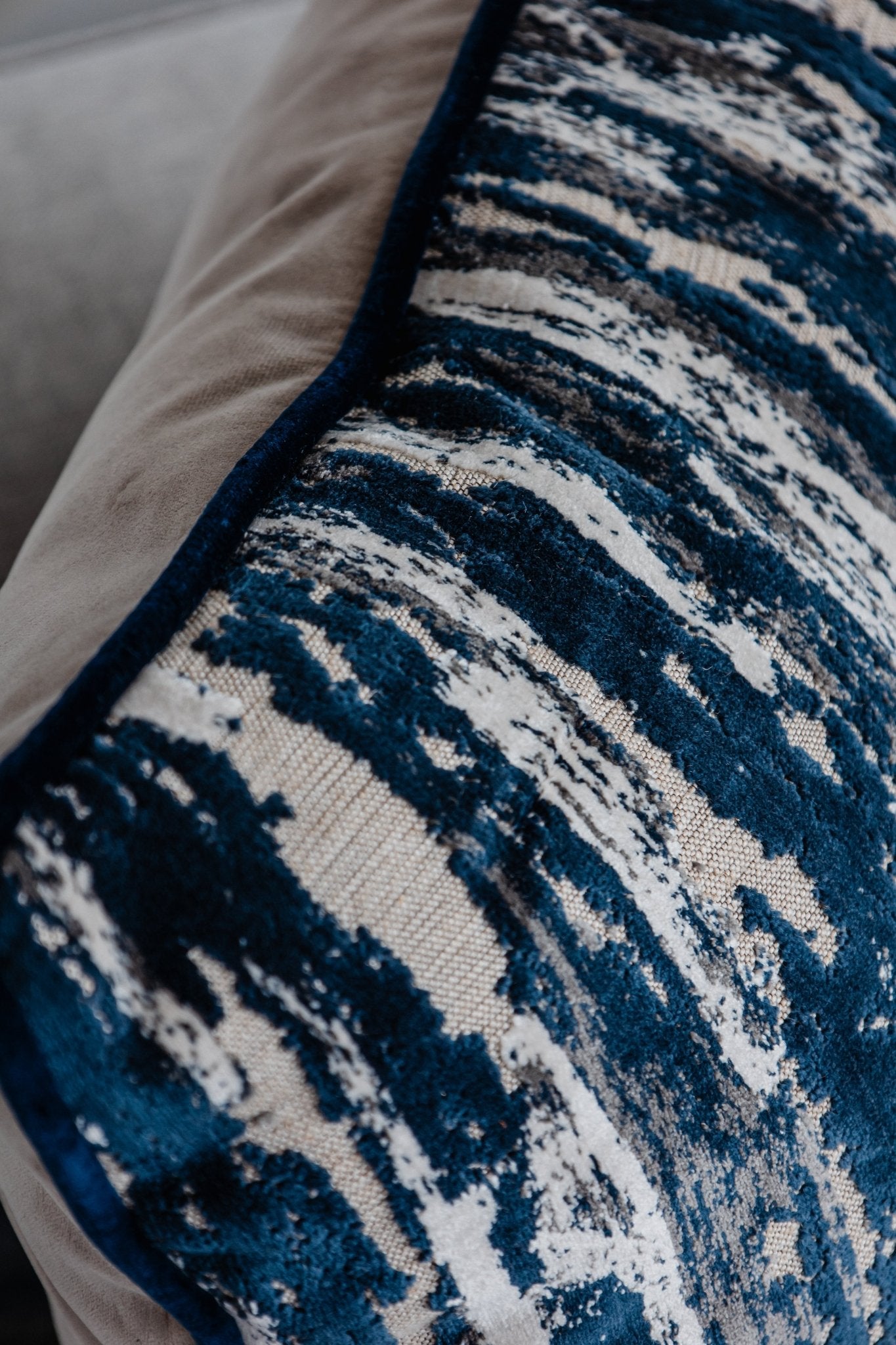A sofa only comes alive with cushions. Within minutes, you can change the feel of a room without buying new furniture or painting the walls. A few covers, clever color combinations, a mix of sizes and textures, and your living room will feel fresh. The whole process is less expensive than you think and is fun because you can see visible results quickly.
Why pillows make such a difference
Cushions are small surfaces with a big stage. They visually break up large sofas, bring color, pattern, and texture into play, and balance proportions. They make a room cozy, appear inviting, and can clarify the style.
Not to be underestimated: With pillows, you can adapt the mood to the time of day and season. Linen and light tones add lightness, velvet and wool add depth and warmth. A cozy "language" that you can rewrite at any time.
Combine sizes, shapes and fillings
A successful mix thrives on variation. Different formats, sometimes soft, sometimes tight, plus a shape that breaks up the series. The eye enjoys following this variety.
- Square: 40 x 40, 45 x 45, 50 x 50
- Rectangular: 30 x 50, 40 x 60 as back support or accent
- Large format: 60 x 60 for depth and lounge character
- Round: Ø 35 to 45 as an eye-catcher
- Roll: Neck roll for armchairs or narrow sofas
When it comes to fillings, feathers and down drape softly and appear luxurious, while synthetic fillings are dimensionally stable, easy to care for, and often less expensive. Those who prefer compression-resistant support should opt for foam flakes or a blend.
Practical guide for sofa setups
| Pillow format | Position on the sofa | Optical effect | Recommended number of 2-seaters | Recommended number of 3-seaters |
|---|---|---|---|---|
| 60 x 60 | back in the corners | Depth, hotel feeling | 2 | 2 to 3 |
| 50 x 50 | Base position | Balanced, universal | 2 | 3 |
| 45 x 45 | Middle position | Fills gaps, brings patterns | 1 to 2 | 2 |
| 30 x 50 | in front | Rhythm, back support | 1 | 2 |
| Round Ø 40 | central | Eye-catcher | 0 to 1 | 1 |
The numbers are a starting point. It's better to have a clear, organized group than a sea of cushions that no one wants to sit in.
Combine colors safely
Colors determine whether the sofa appears calming or energizing. A simple starting point: a main color, a complementary color, and an accent color.
Here's how to proceed:
- Choose a base color: sofa color or wall color.
- Determine complement: lighter or darker in the same spectrum.
- Accent: a tone with more brightness or contrast that appears in small doses.
Examples:
- Grey sofa: Base with shades of grey, plus sage green and a touch of mustard yellow.
- Beige sofa: sand and natural white, plus terracotta or rust red.
- Dark blue sofa: shades of blue, plus powder pink or copper.
Pay attention to undertones. A cool gray harmonizes better with blue-green and ice blue, while a warm gray works well with ochre, olive, and warm beige. Metallic details like brass piping or a subtle sheen in the texture create a sophisticated effect without being loud.
A tip that almost always works: choose three adjacent tones on the color wheel and ground them with a neutral white or beige tone.
Pattern mix made easy
Patterns evoke energy. The trick lies in the gradation of size and density.
- A large-scale motif, such as wide stripes or a generous botanical
- A medium-fine pattern, for example houndstooth or small diamonds
- A calm cushion in plain or with a subtle structure
As long as the colors are related, almost any pattern will work together. Stripes and florals? No problem, as long as they share the same tone. Black and white bring clarity, small dots add a playful touch, and geometric patterns modernize a classic sofa.
A common misconception: everything is on the same scale. It's better to vary things. This creates depth instead of chaos.
Textures you can see
The feel often makes all the difference. Matte linen upholstery appears light and casual, velvet and velour deep and rich. Bouclé adds volume, corduroy brings retro charm, and knitwear creates coziness.
- Linen: breathable, ideal for summer
- Cotton: robust and easy to care for
- Velvet: color-intensive, warming
- Wool and knitwear: soft, coarse-textured, perfect for winter
- Leather and synthetic leather: cool, graphic, good for modern setups
- Chenille and Bouclé: tactile highlights that are effective even from a distance
Combine matte and shiny, fine and chunky. Small details like piping, quilting, or fringes add depth without being overwhelming.
Quick styling formulas for your sofa
If you don't want to think too long, there are some easy-to-follow recipes. Here are some setups that look good on many sofas:
- Symmetrically relaxed: 2 x 50 x 50 in the corners, 2 x 45 x 45 in front, 1 x 30 x 50 in the middle
- Asymmetric with focus: left 2 x 60 x 60 plus 1 x 45 x 45, right only 1 x 50 x 50
- Minimal and airy: 2 x 50 x 50, 1 round in the middle
- Lounge look: 2 x 60 x 60 at the back, 2 x 50 x 50 in front, 2 x 30 x 50 at the front
- L-shape or module combination: one focal point per leg, emphasise corners, calmer inside
A small gesture with impact: Place the cushions loosely, not precisely. A gentle fluff, a soft edge at the top, and it will appear lively.
Seasonal updates on a small budget
Changing with the seasons is fun and inexpensive. The trick lies in the upholstery and textures.
Summer:
- Linen, cotton, thin canvas
- Light tones such as natural white, sand, sage, ice blue
- Airy stripes, small checks, subtle floral patterns
- One or two pillows with a cool touch, for example smooth cotton satin
Winter:
- Velvet, wool, knit, bouclé
- Rich and dark: petrol, fir green, Bordeaux, saffron
- Structured covers, quilting, piping in dark tone
- Layer with plaids that pick up color from the pillows
Spring and autumn can be subtly differentiated, for example with pastel in spring and warm mustard or rust in autumn.
Practical: Pillow inserts stay put, covers change easily. This way, you require minimal storage space. It's best to store natural fiber covers folded, and don't pack velvet and chenille too tightly to keep the surface smooth.
Style Guide: Scandi, Boho and Modern
Scandi: calm, natural, clear
Characteristics: light woods, lots of white, gray, muted blue tones, clean lines.
- Colors: Off-White, Light Grey, Mist Blue, Sage
- Pattern: fine stripes, small diamonds, herringbone, preferably reserved
- Textures: linen, cotton, light bouclé
- Arrangement: symmetrical, 4 to 5 cushions, few fringes
Sample set: 2 x 50 x 50 in mist gray, 2 x 45 x 45 with fine stripes, 1 x 30 x 50 in sage. A light wool throw picks up the sage color again.
Boho: free, casual, collected
Features: warm natural tones, ethnic elements, vintage mix, plants and wood.
- Colors: Terracotta, ochre, olive, ink blue, lots of natural white
- Patterns: Ikat, Kilim, Paisley, handwoven structures
- Textures: cotton canvas, chunky knit, macrame, fringes
- Arrangement: asymmetrical, calmly layered, 6 to 7 cushions for a large sofa
Sample set: 2 x 60 x 60 cm in a warm natural tone, 2 x 50 x 50 cm with a kilim pattern, 1 x 45 x 45 cm with a pouf-like structure, and 1 x 30 x 50 cm in olive. A round cushion in mustard adds a playful accent.
Modern: graphic, reduced, pointed
Characteristics: clear shapes, strong contrasts, metal and glass, bold individual accents.
- Colors: Black, white, graphite, a strong accent like cobalt blue or signal red
- Patterns: wide stripes, large geometries, block colors
- Textures: leather or faux leather, smooth velvet, smooth cotton
- Arrangement: precise, rather fewer cushions, but striking
Sample set: 2 x 50 x 50 in graphite, 1 x 50 x 50 with a large black and white pattern, 1 x 30 x 50 in cobalt blue. Metallic nickel piping creates a delicate frame.
Common mistakes and how to avoid them
- All in one size: That looks flat. Mix at least two, preferably three, formats.
- Only patterns, no solid colors: The eye needs a rest. Incorporate one or two solid-colored pillows.
- Too much white on a dark sofa: It looks harsh. A warm, natural tone softens the harshness.
- Too soft fillings: Pillows will collapse. It's better to choose high-quality inserts or a size larger to ensure the cover fits snugly.
- Color accent without repetition: A red pillow on its own looks lost. Repeat the color a second time, perhaps in a throw or a second pillow.
- Cushions block the seating area: Put cushions together in the evening when you need space. Decorations shouldn't interfere with everyday life.
Care, quality and sustainable options
Covers should have zippers so they can be washed or dry-cleaned. Natural materials like linen and cotton age beautifully; slight creases are part of their charm. Brush velvet and chenille regularly against the grain to keep the pile looking fresh. If you have pets, choose covers with a dense weave, which are less likely to attract hair.
Inlets:
- Feathers/down: soft, malleable, and comfortable. Look for animal welfare certifications.
- Synthetic: easy to wash, retains its shape, and is suitable for allergy sufferers. Versions made from recycled fibers are available.
- Blends: combine volume and hold.
Sustainable furnishing is also possible with secondhand items. Covers can be washed or professionally cleaned, and inserts can be purchased new. Sewing enthusiasts can repurpose fabric scraps for cushion covers, creating truly unique pieces for their sofas.
Mini shopping list and budget examples
With a plan, you'll save money and make better decisions. This list will help you choose:
- 2 to 3 basic covers in plain colours (one colour slightly darker, one slightly lighter than the sofa)
- 1 to 2 eye-catchers with a pattern or special structure
- 1 accent in a strong color
- 2 high-quality inlets in 50 x 50
- 1 to 2 inlets in 30 x 50
- Optional: a round cushion for the middle
Price ranges can look like this:
- Quick refresh for 30 to 50 euros: two new covers in plain colours, replace a cheap inlet
- Visible change of 80 to 120 euros: four covers, two of which have patterns, plus a new inlet
- Statement setup for 150 to 250 euros: high-quality fabrics such as linen or velvet, plus a special design piece in a round shape
Tip: Buy covers in standard sizes. This way, you can change them later without having to buy new inserts.
Examples of color combinations that have an immediate effect
- Tone-on-tone beige: sand, caramel, natural white, plus a cushion in a knitted structure
- Cool calm: ice blue, smoke grey, mist white, a touch of anthracite
- Warm and elegant: fir green, brass accent, dark grey, a touch of cream
- Mediterranean freshness: terracotta, sage, chalk white, plus a small striped pattern
- Urban with edge: black, graphite, cobalt blue, smooth velvet
One sofa, three looks with the same base
Do you have a medium gray sofa and two 50 x 50 gray cushions? Here's how to change it up without a big purchase:
Look A, clear and calm:
- Add 2 x 45 x 45 in Mist Blue
- 1 x 30 x 50 in cream
- A light cotton plaid in grey
Look B, warm and cozy:
- Add 2 x 45 x 45 in rust or ochre
- 1 x 30 x 50 in warm beige with piping
- A knitted plaid in natural tone
Look C, modern and graphic:
- Add 1 x 50 x 50 black and white stripes
- 1 x 45 x 45 in graphite
- 1 round Ø 40 in cobalt blue
Everything is built on the same basis and can be changed in minutes.
Tips for small rooms and large sofas
Small rooms:
- A few larger pillows instead of many smaller ones. This creates a calmer effect.
- Light covers, light textures.
- Keep the edges clear so that the seating area remains large.
Large sofas:
- Create a depth of 60 x 60, otherwise it will look lost.
- Arrange pillows in groups instead of spreading them out along the entire length.
- A round cushion in the middle draws the eye and brings the composition together.
Bonus: The simple decision tree
- Is your sofa dark? Use two light solid colors, one medium color, and one accent color.
- Is your sofa light? Use a medium color as a base, a dark tone for grounding, or an accent.
- Do you have a lot of patterns in your room? Use more solid colors and use patterns sparingly.
- Room very quiet? Start with a large pattern, then add two solid-colored pillows.
Small styling habits with a big impact
- Briefly fluff the pillow in the morning and then place it slightly offset.
- Iron covers lukewarm after washing; the edges will then appear more precise.
- Reorganize everything completely every 2 to 3 months so that nothing becomes monotonous.
- Repeat a color accent twice, for example, pillow and candle or pillow and art print.
The best ideas often come from experimenting. Slip on covers, swap seats, photograph the look, and compare. What you like in the photo usually works well in the room. This way, your set gradually develops a signature style that suits you and continually presents your sofa in a new way.




